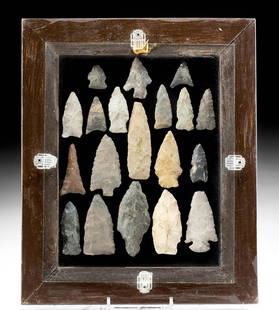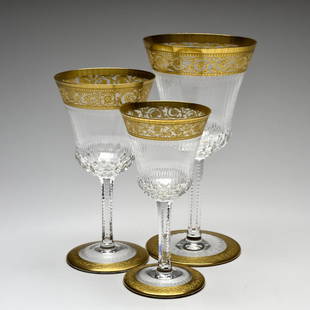
1st Nat'l Flag of Confederate States of America
Similar Sale History
View More Items in Wine & SpiritsMore Items in Wine & Spirits
View MoreRecommended Collectibles
View More








Item Details
Description
1st National Flag of Confederate States of America ("Stars & Bars") According to family history, this flag was captured by Commander Charles Caldwell, U.S.N., while serving aboard the gunboat 'Itsaca' during the advance of Admiral Farragut's fleet up the Mississippi River towards New Orleans, probably near Fort Jackson and Philip. Accompanying this lot is an album assembled by the great-grandaughter of Caldwell, Dorothy M. Caldwell Morrill. The first documentation in the album is a notorized affadavit drawn by Ms. Morrill and, in part, states the following: she is the great grandaughter of Charles Henry Bromadge Caldwell who was born on June 11, 1823 in Hingham, Massachusetts and died November 30, 1877 in Waltham, Massachusetts. The 1918 obituary published in the Boston Globe is included. She states that this flag has been in the custody of her family from the day it was captured. She also includes in this album, in her own hand, a copy of the Report of Lieut.-Commanding C. H. B. Caldwell, U. S. Gunboat Itasca, U.S. Steam Gunboat, Itasca, Pilot Town, Miss. River, April 24, 1862 wherein Lt. Caldwell writes this poignant letter, reporting to his commanding officer, in detail, the events leading to the capture of this flag. It reads as follows: Copy of the Report of Lieut.-Commanding C. H. B. Caldwell, U. S. Gunboat Itasca, U.S. Steam Gunboat, Itasca, Pilot Town, Miss. River, April 24, 1862.Sir - Agreeably to your instructions, I
proceeded up the river in the boat furnished from the "Hartford" to make a final reconnoissance of the schooners on the West bank of the river and a careful examination as to the chains that were originally stretched from them to the schooners on the starboard side one of which ran on shore on the night of the 20th. I succeeded in reaching them after a long, fatiguing pull against the current, without opposition or discovery, althought we were directly in range betwen the forts and a fire lighted on the opposite short to illuminate the reach across the river and I could distinctly hear the voices of the rebels at Ft. Jackson as they were busily engaged in some outside work. I found two of the three schooners were on shore and the outside one riding head to the current with a no. of chains hanging from her bow. I passed ahead leaving her fifty yards on the port hand and dropped over a deep sea lead, veering to 12 fathoms of line. We then lay on our oars and drifted down the stream without feeling any obstructions. We found all the booms attached to the in shore schooners and a no. of rafts in shore of them aground and the outside schooner was entirely clear. Returning I stopped alongside the east bank and dropped the lead over with 15 fathoms of line floating by within 20 yards of her.
Having satisfied myself fully by these and other observations that no obstructions whatever existed and that the chains we slipped on the night of the 20th had disarranged and almost destroyed the whole apparatus for preventing our passage up the river and that at the condition of things was precisely as I had previously reported and that the whole fleet could safely bypass. I made with confidence and inexpressible satisfaction on my return our preconcerted signal that the channel was clear and everything propitious for the advance of the fleet. I regret to be obliged to state that my progress afterward with the fleet was attended with serious misfortune and disappointment. On arriving abreast of Ft. Jackson a storm of iron hail fell over and around us from both forts which was continued without intermission while we were under their guns. A no. of shots took effect several passing through us. One a 42 pount shot passed through the port side, a coal bunker full of coal ironplate bulkhead and entered the boiler making a large hole and breaking the dry pipe therein; from this hole the steam rushed in a dense cloud filling the fire and engine room, and driving everyone from below and almost suffocating those on the quarter deck.
The loss of our motive power having destroyed our efficiency and left us almost helpless. I ordered every man to throw himself flat on the deck, the helm put hard a starboard, and, turning floated down the river. When out of range of forts I ordered the pumps manned fore and aft and our deck was soon several inches deep with water which was pouring also out of every scupper. Supposing the ship to be in a sinking position I ran her on shore below the motar fleet where I remained until I satisfied myself that the leak was not as bad as I had at first supposed and then hauled off and anchored.
I am happy to state that but three men were injured during the engagement--two fire men scalded by the steam and the captain of the hold wounded in the head by the splinter, I have received fourteen hits as follows: three shot holes through the vessel below the decks and one through the bulwarks on the starboard side; one through the cut-water, grazing the bowsprit; one cutting away a davit span and shivering the jiny main mast (the main gaff) and one 8 inch shell exploded over the quarter deck driving a large piece through the port signal locker and bulwarks; one shot took out of the port side a piece of plank 3 feet long, shivered 5 ft. of the next plank, crushed all of the timbers in its passage and split one knee; another shot hole in the starboard side is nearly as bad.
Allow me, flag officer respectfully and sincerely to congratulate you upon the glorious passage of the fleet and to express to you the heartfelt sorrow and disappointment that my disabled condition prevented my being a participant in its complete success and to assure you it was owing to circumstances that Providence along could control. Very respectfully your obedient servant, C. H. B. Caldwell Lieutenant Commanding' (End of letter/report)
There is also a list of the Crew of the USS Itasca and other interesting documentation. On line further information can be found such as: CALDWELL, Charles Henry Bromedge, naval officer, born in Hingham, 3lass., 11 June, 1823; died in Waltham, Massachusetts, 30 November, 1877. He entered the navy as midshipman 27 February, 1838, and became lieutenant 4 September, 1852. With a detachment from the "VandMia," he defeated a tribe of cannibals at W eta, one of the Feejee islands, and burned their town, 11 October. 1858. In 1862 he commanded the gun-boat " Itasca," under Admiral Ferragut of the western gulf blockading squadron, and took part in the bombardment of Forts Jackson and St. Philip. On the night of 20 April his gun-boat, with the "Pinola," was sent on an expedition under the command of Fleet-Capt. Bell, to make a passage for the fleet through the chain obstructions near the forts. Lieutenant Caldwell and his party boarded one of the hulks that held the chains, and succeeded in detaching the latter, in spite of the heavy fire to which they were subjected. The "Itasca" was then swept on shore by the current, in full sight of the forts, and it was half an hour before she was afloat again. She was unable to pass the forts with the rest of the fleet, owing to a shot that penetrated her boiler. Lieutenant Caldwell was in the action at Grand Gulf, 9 June, 1862, and was promoted to commander on 16 July. He commanded the iron-clad "Essex," of the Mississippi squadron in 1862-'3, and took part in the operations at Port Hudson, from March to July of the latter year, in command of the " Essex" and the mortar flotilla. He commanded the" Glaucus" of the North Atlantic blockading squadron from 1863 till 1864, and the "R. R. Cuyler," of the same squadron, from 1864 till 1865. He became captain, 12 December, 1867, chief of staff of the North Atlantic fleet in 1870, and commodore on 14 June, 1874.
A truly wonderful piece of American history.
Condition: Professionally conserved & repaired with proper backing sewn behind losses in proper colors (see Conservator's report); Mounted on a black background and housed in a subdued black and gold later frame.
Size Flag: 34" H X 51" W; Frame: 44.5" H X 61" W
Weight: 40 lbs
Buyer's Premium
- 17.5%
1st Nat'l Flag of Confederate States of America
Estimate $200,000 - $250,000
2 bidders are watching this item.
Shipping & Pickup Options
Item located in Sunrise, FL, usSee Policy for Shipping
Payment

Related Searches
TOP





































































